Horses of Dr. Iskandar Qassis
One reason I enjoy keeping this blog is the unexpected encounters that I had the chance to make through it over its nearly five years of existence. One such encouter was the one with Obeyd al-‘Utaibi (“a.k.a Pure Man”) a ‘Ataiba Bedouin of Saudi citizenship who maintains the spirit of old Arabian Bedouin horse breeding — as opposed to the new Arabian horse breeding spirit largely prevailing in the Gulf today, which is not based on old Bedouin knowledge and practices and is basically just mimicking Western practices, minus the West’s knowledge (there are exceptions, of course). Another was the encounter with the Tahawi clan (Yehia, Mohammed, and of course Yasser) a couple of years later. Great things happened as a result of both encounters, knowledge gaps were filled, missing pieces of puzzle put together, and in the Tahawi case great progress was made on the preservation of the few remaining asil mares they have.
The latest encounter of this type took place when Jibril Kareem Melko of the UK contacted me recently. He is the grandson of Mrs. Nazeera Qassis who was the niece of Dr. Iskandar Qassis. Dr. Qassis was the foremost preservationist Syrian horse breeder in the 1950s, 1960s and 1970s, a well of knowledge on desert Arabian horses, strains, Bedouin tribes, and customs and a fanatic about asalah (purity). His breeding program, documented by Judith Forbis in what I believe is one of the two best articles she wrote (the other one is the “Pearls of Great Price” she wrote on the horses of Bahrain, check out both in her Classic Arabian Bloodstock blue book), is long gone, yet four or five mares tracing to his program remained in Syria until the horrific events of the past two years.
So Jibril sent me the below photos from a visit his mother, uncle and aunt made to see their their uncle’s horses in Aleppo. The horses cannot be identified anymore, but the photos are nevertheless a real treasure. I haven’t written enough about Dr. Qassis and his horse son this blog and promise to make up for this soon.
Jibril also wrote the following: “I’m originally from Alleppo. Two of my uncles used to breed horses. One is called Abdul Nefr Hussan and the other is called Dr. Iskander Kassis. My “strain name” is actually Melko however we also still use Kassis but rarely. My mother (she was a midwife) went with her brother and sister to see his private practice. They always talked about his horses so decided to pay a visit. In one picture you can see the Drs’ son.”
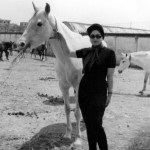

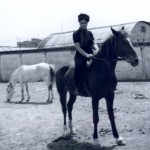
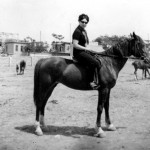
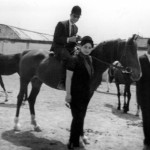
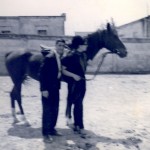
I am SO happy to see these. Raswan also wrote something about Dr. Qassis (Kassis) (although I may be thinking of some old photos we have that came through Richard Pritzlaff). My memory needs jogging! The more you write about this program, and its relationship to the other Syrian breeding programs, the better I will like it.
Ditto Jeanne, I would love to know more.
I hope that through all the horror, Asil horses will be protected in Syria… of course the atrocious price in blood and suffering may make these sentiments seem superficial but Asil horses, as the Aleppo Souk are part of the soul of Syria (to borrow the phrase of Edouards last post)and I hope, for Syria, that not just her people, but her soul survives this hell.
I hope also.
My husband and I visited Aleppo in 1971. Dr. Kassis was a great friend to us, inviting us to his home and showing us his wonderful Arabian horses. I have a couple of photos of him and of his horses.
I’m Amin Kassis, Dr. Kassis’s son. I remember Janet Murphy’s visit to Aleppo in the 60s. What a wonderful place & life we all had in Aleppo.
oh, Janet, it would be wonderful if you could share them, if they were already scanned; my email address is ealdahdah@hotmail.com
To Amin Kassis: I just wanted to say that you and your family must have had a wonderful life there, and I want to know all I can about your home and your horses, especially.